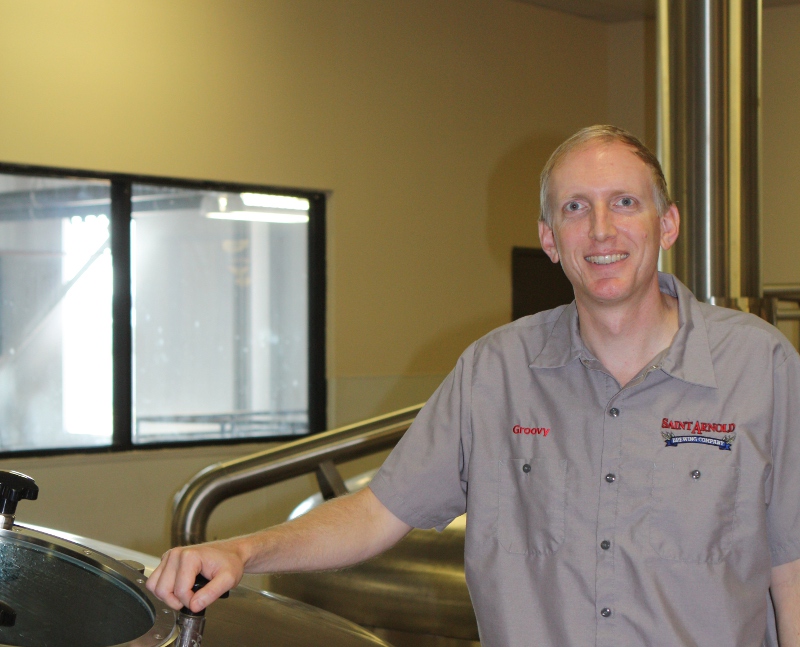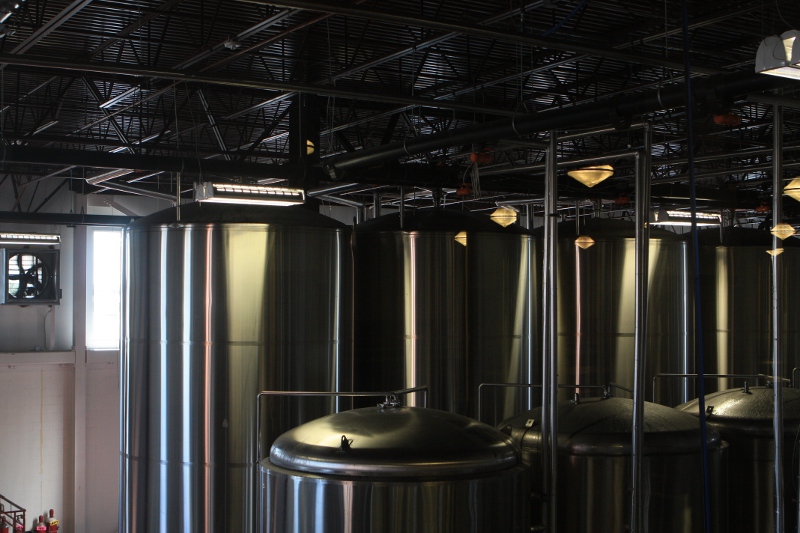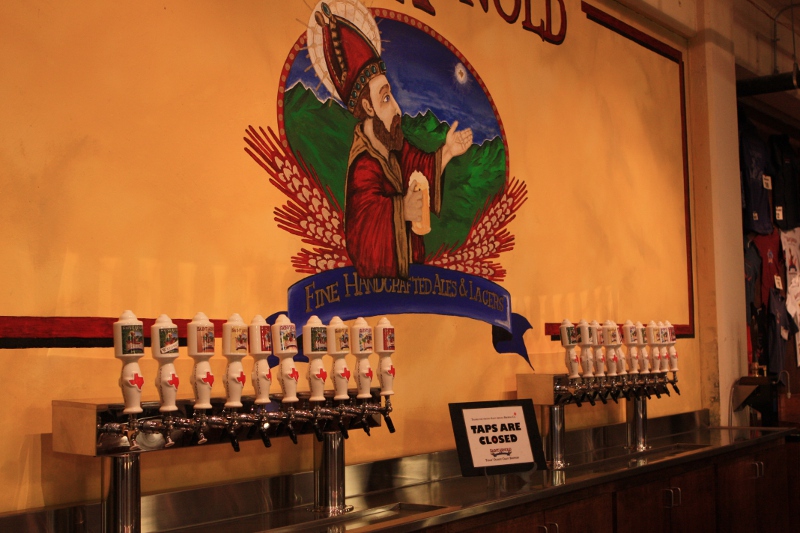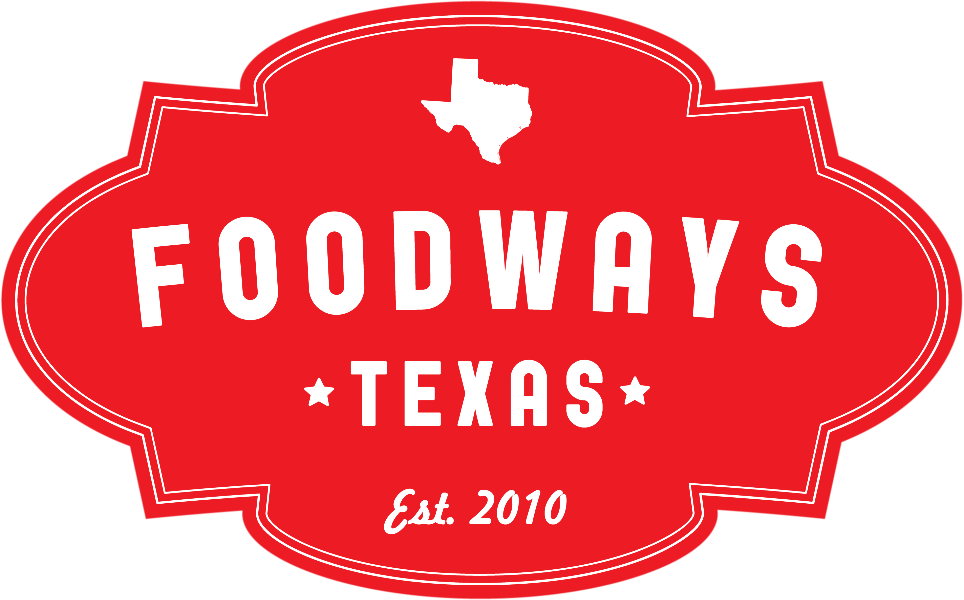Interviewer: Niko Tonks
Location: Saint Arnold Brewing Company
This interview is a production of Foodways Texas.
Brock Wagner is the founder and brewer at Saint Arnold’s Brewing Company in Houston, Texas. Growing up in Cincinnati and then Brussels, Belgium, Wagner gained an appreciation for wine and beer which carried through his college days at Rice, where he was introduced to home brewing.
After a stint in Investment Banking, Wagner realized he needed to follow his true passion, brewing. For more than twenty years Wagner had been creating an institution that Houston and the region is proud to call their own.






NIKO TONKS (NT):My name is Niko Tonks, – – I am here at Saint Arnold Brewing Company here in Houston, Texas, it is August the fifth [5th] twenty-eleven [2011], and I am here with Brock Wagner. For the record, would you state you name, your position here at the brewery, and you – – birthdate?
BROCK WAGNER (BW): I am Brock Wagner, the founder and brewer at Saint Arnold’s.
NK: Alright – – so, my, my first [1st] question – – is, is, is more or less a, a two [2] part question – – I am just trying to get at the history of the business, and, and, and your, your personal history – – with brewing. So, what, what brought you to brewing?
BW: I grew up in Cincinnati, in Brussels, Belgium I was a Proctor and Gambles child – – I guess it was probably about – – oddly when we lived in Belgium, and my parents were very into wine, so, we would take the great trips to Burgundy every year, and – – and that was sort of my first [1st] real. – – And I was, I guess between the ages of nine [9] and thirteen [13] for me. So, you kind of go where your parents going – – and my parents would always let me – – when I was five [5], my parents would give me a little tiny glass of wine, it was, it wasn’t very much, and then I would drink my milk, or orange juice, or whatever was with, this was with dinner. — But – – as you know, in Europe, I really gained the appreciation of the good wine and. Actually my palette really developed, as my dad would bring a bottle out from the cellar, and I had to guess, you know, what it was.– It was probably around age sixteen [16] that I started getting more interested in beer, and the first [1st] beer that really turned me on was – – Hutipul [sp] Brewing in Cincinnati came out with a beer called Christian Moreline [?] [sp], and – – it was the first [1st] beer that, that – – in this country in perhaps along time – – that had been brewed according to this crazy German law the Rinhizkebad [sp] [?] Never heard of before said: You could only use; Malt, hops, yeast and water in the beer, and – – I remember having that beer and thinking. Wow, this really has a nice flavor to it was- – it was a, – – Looking back, it was a nice malty, probably a Helix really in style – – maybe a slightly dark Helix, more of a Vienna, but it was a really nice beer. And I really came to like the beer – – and when I came down here, I went to Rice to go to college. – – triculated [?] in Eighty-three [1983] – – back then, the drinking age was nineteen [19], so, even though I was only eighteen [18], at that point, people weren’t really enforcing the law very – – tightly – – and I would go on, on a – – we didn’t have any food service on campus.
NT: So, you lived in Europe, until you were – –
BW: So, I lived there till I was thirteen [13]. So, I came to Rice, we had no food service on Saturday. So, we had to go off campus, and we would, I would often go to Hungrie’s – – which was in the Rice Village, and they had a cooler back then. – – Hungrie’s is still there, but they have completely renovated it, and it looks completely different. But there was this cooler with bottles of beer from around the world, and that was really unusual in nineteen-eighty-three [1983], and I would go in, and I would try these different beers. I remember, I had my, pilz, – – first [1st] Pilsner kil, [?] there. I had my first [1st] Belhaven [sp] I would, every, – – I had my first [1st] real October fest. I would go and try these different beers every Saturday. And I really got turned on to all these different beers. I started reading on it – – and then my sophomore year. We had a new RA in, in the dorm, Bob Walp who – – played trumpet for the Houston symphony. And – – he was a home brewer, and we actually got together. We started doing the – – a lot of stuff with wine; But he also brewed, and he was the one [1] who introduced me to home brewing, and taught me how to home brew.
NT: So – – what, what year was that?
BW: That would have been nineteen-eighty-five [1985] that I actually started home brewing. So, home brewing was interesting, because you could make – – I mean, the sky was the limit, and – – if you look at traditions of brewing in Europe, everybody in Europe. They brew a lot of good beer, but they brew with their father, and their grandfathers, and great grandfathers, and great, great grandfathers, and there was no, sort of creativity – – or, historically certainly, you know, I could argue, I you think you could argue, in the last five [5] years, you have seen some small changes. But – – there was no creativity, it was just exactly the same thing, and some beer styles had died, just gone away. As a home brewer, it was like – – there was sort of the fun of creating these flavors. There was a little bit of fun of beer archeology, and that you could bring back, you know, or brew a Porter, which had really died. And also, you know, It was, really very eye opening, just the freshness of the beer, when you drank the beer that fresh how different it tasted. So, that was what really turned me on, to brewing. So, I kept brewing after college. After college, I took a job in investment banking, and, and I did mergers, and acquisitions, and corporate finance, and – – it was nineteen-eighty-seven [1987], when we graduated which was like, the absolute bottom of the real estate market here. So, me and my roommate from college, we rented this just great high-rise apartment that, you know, people just out of college, just have no business renting – – but it was a big apartment, and – – had a huge kitchen, which was perfect for – – home brewing. So, I moved all my home brewing equipment, and really kind of geared up. My roommate actually kind of hated home brewing. So, if he came, well, you know, when he got up on a Saturday, and if he saw me organizing the equipment. He would just head out the door, and I wouldn’t see him for the rest of the day.
We – – at the end of my – – investment banking, I, I had the boss from hell, and I, this, and this was, some of was sort of growing, and bugging me, is as I worked investment banking. We were all paid ridiculous sums of money for the, our age – – we worked crazy hours, I mean, seventy [70] hours, and at seventy [70] hours a week, you have no other life.– So, basically I sold, I sold my twenties [20’s] to investment banking – – But, I got this incredible experience working with, I would be sitting there at twenty-five [25], sitting with CEO of companies, and discussing strategy, and what you would learn. You know, I look back at it, and I kind of cringe to think that I could of ever like told somebody who’s running a company, something actually knowledgeable about their own company, because people try to do the same thing to me now, and I realize how silly that is, but, anyway. I didn’t have the perspective, at that point.
But – – I also, it kept bothering me, that there just was no end in itself. We were, all we were trying to do is generate money for ourselves, really more than anything else. And then I would watch how money would completely corrupted peoples value systems. And I realized – – came to the conclusion, which I thought was my motivator, was not my motivator. I needed to do something I was really passionate about, and about that time, I also had the boss from hell. And I was specialized in the oil industry, and lived in, our office was in Houston, but through series of changes in the firm, ended up with a boss who, who was up in New York. And even though all of our clients were down here, he ultimately in hind sight. I, I realized he wanted to move, to close the Houston office, and move us all to New York. But I ended up in New York for was supposed to be six [6] months. When I, my six [6] months were up, and I said, Okay, I am going back to Houston, that’s when the hell began. And he decided he wanted to fire me, but instead of just firing me, which he should of, because, I had already told him I thought he was an idiot. – – Which, you know, should be grounds for firing me. I mean, he was an idiot, but that’s beside the point – – Then he started setting these traps for me, he caught me the first [1st] time. Then I figured out what he was doing, and then I out smarted him the next couple of times, and I woke up one [1] morning. I had TMJ and I couldn’t open my mouth. And I said; what am I doing? And that’s when I said; Okay.
[Laughter]
– – I need to do what I love. And I, I think really what the, the catalyst was.
NT: So, through all this education, when, when you got a, a Saint Arnold Beer into somebody’s hands, was it smooth sailing from there on out, or did you encounter more resistance, even when people started drinking it?
BW: Well when, we brewed, yeah, we, we had a lot of hiccups in doing our construction, and getting the brewery started – – plumbers over pressurized our brew kettle, and doing pressure test, they were supposed to isolate the kettle, and they, and instead they blew it – – but finally got the first [1st] brew out of Amber Ale, and that was June of ninety-four [1994], June ninth [9th] nineteen-ninety-four [1994], and we had an opening day party at the Ginger Man. – – The first [1st] batch of Amber Ale, when we scaled it up, looked, malt scales fairly linearly, hops do not, and I knew that, and I scaled back on the hops, by maybe twenty-five percent [25%], which wasn’t nearly enough and basically the, the very first [1st] batch of Amber Ale was really, an IPA, and I remember looking around there, you know, the thirty-seven [37] Craft Beer drinkers were there, but there was some other people there too. Those, those thirty-seven [37] loved it, the hop heads were just in, in heaven, but I also saw a lot of half [1/2] full pints sitting on the table,[Laughter] and that was a little disheartening. You know, revised the recipe, and basically the [2nd] batch of it was pretty much dialed in, and Amber Ale’s been the same ever since. — But, The, the, yeah, we would get – – I remember I would field phone calls. This, this is, you know, several months a year, years out. Where we would get calls from accounts, and people would say; hey, you’re, your beers off, the people here came and drank it, and they said something’s wrong with it, and I would field feel physically sick, sick to my stomach. And I would drive out there immediately, to try it to see what was wrong, because you know, with beer you’re always worried about infections and problems. I would go out there, and I would taste it, and I’d go; hmmm, actually this taste pretty good. I said; well, what did they say the problem was? They’d say; oh, they, they said; it was bitter. It’s like; yes, that’s, that’s how this beer is supposed to taste. So, there were defiantly a lot of issues – – the education process was hard, and the nineties [90’s] were hard, and there were a lot of other breweries opened up in the nineties [90’s], and then they closed. I remember, you know, when we were trying to get people to come work for us, in ninety-four [1994], and ninety-five [1995], ninety-six [1996], there were a lot of people interested, but then the breweries all started to close, and in ninety-seven [1997], ninety-eight [1998], ninety-nine [1999], two-thousand [2000]. When we would have a job posting, it would. You know, there wasn’t a lot of interest in people wanting to work at the brewery, and it was tough – – you know, we grew well in ninety [1990], ninety-four [1994], we sold about six hundred [600] barrels, we were open about, you know, just over six [6] months. Second [2nd] year in ninety-five [1995], I think we sold, you can pull it up, I think we sold about two-thousand [2000] something barrels. Ninety-six [1996], we sold about four-thousand [4,000] barrels, from ninety-seven [1997] – – between ninety-six [1996] to two-thousand and one [2001, we were between four-thousand [4,000] and six-thousand [6,000] barrels, and we didn’t really, we kind of went up , down just a little up, just a little bit more – – not a huge amount of growth, during that period, basically flat, and it was during that periods, in ninety-nine [1999] that I bought my partner out, Kevin. – – Originally we had seventeen [17] outside investors, and then Kevin and myself, so, there was nineteen [19] of us total. Kevin and I owned the majority of the company, although Kevin had more, a lot more money than I did, so, he actually in, in the very beginning, he had a lot more of the company than I did, I think, he had about just over fifty percent [50%] ,and I had about fifteen percent [15%] – – which was something that always stuck in my crawl a little bit, you know, I, is, all the work I was doing, and owning fifteen percent [15%] just sort of my baby.
NT: So, changing gears a little bit, but – – when you were telling your story about you moved from investment banking to, to brewing. It struck me as that, that, that’s sort of the, the dominate narrative in the craft brewing industry, is that graduated from College, got this job, decided that it wasn’t fulfilling, and moved to beer, and I was wondering if you, if you had experienced that, as the story that people tell A and B? If so, if you had any idea why beer is the thing people turn to?
BW: – – Oh, definitely, I mean, you go around the industry, and you talk to people, and it’s, it is, and eclectic very interesting group of people – – they come from all walks of life – – most people did do something after college, I mean, you’ve got, you know, writers, you know, and, you’ve got the, the, the English majors of the world, you, there’s lawyers, there’s social workers, there‘s – – you know, chemists and, and PHD’s, and all sort of interesting – – branches of science. But, there is something about beer that, I think, when,when it captures your imagination, and I think, to me, it’s the combination of, you know, it’s the cooking, it’s the alchemy of, of fermentation, and the community that surrounds beer, and I think that is what attracts people to it. It’s a great method for creativity, but I would say truly the unifying element of it, is the community that surrounds beer. Brewers, we all like to hang out together – – you would think that we are all competitors, and, you know, there is that, certainly that element to it, you know, we, we are business. We have to exist, but, you know, we, we like to be with each other, I mean, it’s an industry, as I like to describe, as being ninety-nine [99%], ninety-nine and half [99 ½%] asshole free, there is the half [1/2] percent,but you can avoid them.
NT: And is – – So, that leads to another question, I was going to ask. Where, Texas Craft Beer it, it, it seem to be a little slow on the, the uptake, compared to a lot of other states, but, in recent years, there have been a large number of breweries that have opened, and as part of the emphasis from my doing this project, so, I was wondering if someone, as someone with experience in this state where, where, where do you see Texas Craft Beer going one [1]? And, and two [2]: What do you think that having a local option – – for all across the state, and just in general is, is something that is necessary for the industry, or just sort of a bonus?
BW: – – Where do I think its going? I think the, the Craft Beer business is going up, and I think it’s got a lot of room to go up, and I think it is going to continue to be a – – a long process, I think it is going to be very interesting, you know, if, if you look, I mean, when people ask me who’s our demographic? I say; its beer lovers, and I don’t draw any demographic lines, I think that is very silly. It’s very short side to do that, it’s, we want, it’s beer lovers, and if you look, and you see who appreciates beer, it does cross a, go across demographic line – – having said that, you know, you can always do an average, and see who, who the average consumer is on any product, and it probably does tend to go to sort of educated white males – – and given the demographic of Texas. Which is so, heavily Hispanic – – and, and that’s an area that’s going to continue to grow. I think it will be real interesting to see, does it become a part of the Texas culture, as a whole? And that’s something that I would really like to see; because I think everybody appreciates good beer. This is not something that is somehow limited genetically, and, – – and to one [1] – – demographic – – so, – -you know, that, that’s something that, that I really hope long term, and I think it will be important for a very long term healthy Craft Beer in Texas. I think seeing all these breweries open up, is great. — It really wasn’t healthy having only a small handful of breweries, especially spread around a state this big. You don’t get that sense of community – – that I would, I would like to see. So, I am very happy to see all these breweries opening up. You know, you’re going to see more of a community of brewers now – – I suspect with all the breweries opening up, that there’s too many, more breweries opening that should be opening, so, you will probably see a wash out in a couple of years. But again, if the, if the industry, if, if the market here develops enough, it will carry everybody along, and some of the ones [1] s who aren’t necessarily doing things, as well at the beginning, it will cover up their mistakes, and they will learn, and you know, so, you may not see a wash out.
NT: I like what you said about a- – beer being integrated into Texas culture, as a whole. Do you think that you can, you can say and, and I don’t mean for this to be a leading question, at all – – say that, that, that Saint Arnold’s has sort of become part of the Houston culture? Can you, can you break Texas up in to chunks, and say, that, that is something that you have either done, or on, on the road to doing?
BW: Yeah, and when I opened the brewery, I had to right a “Mission Statement”, and – – you know, it’s, it’s one [1] of those things that, that I spent a lot of time working on, and I am really glad, my dad actually helped me through on this process, and, and starting the business, and figuring out what I wanted it to be, and – – it was, and I am glad we did, and it it’s one [1] of those things that, it’s something I feel. I have some pride in, because it, the “Mission Statement” I wrote in nineteen-ninety-three [1993], for this brewery that didn’t even have a name yet, – – at this time, it was Wagner/Bartol Brewing, that was just our working name. We had no intention of calling it that – – is still our mission today, and what drives absolutely everything we do, and it’s two [2] fold. One [1] is brew and sell the best beer in Texas, which I define as brew a great, you know, world class beer, and get it to people fresh – – and the other was to create an institution that Houston, and the region would be proud of, and that still is very much what drives everything, and I do think that we have become more and more a part of Houston’s culture, probably not Texas at large, but definitely Houston.

